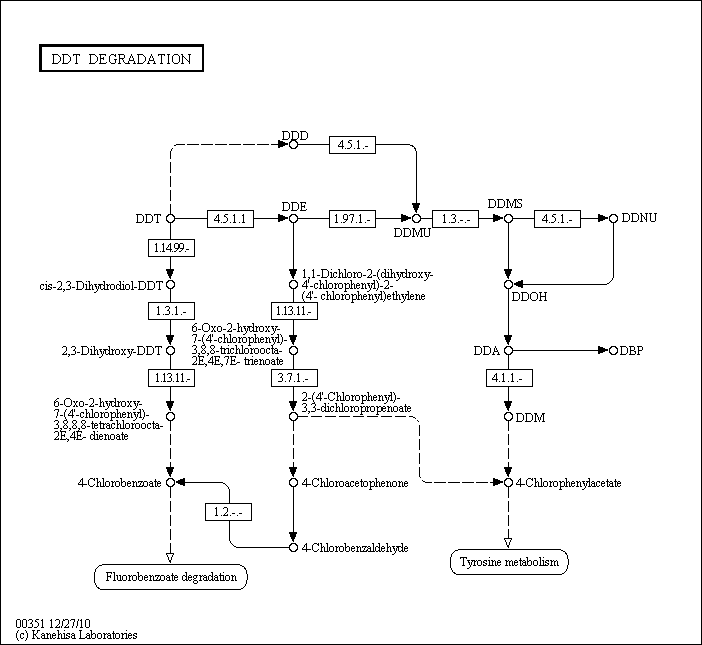DDT Degradation
Description: DDT, or dichlorodiphenyltrichloroethane, is a synthetic pesticide which has been in existance since the 1800s, but its properties and uses were not discovered until the late 1930s. It is a very controversial compound because it has been found to be dangerous in animals, which have a hard time metabolizing DDT. In animals, it has a half-life between 6-8 years and resides in fatty tissues in the body.
There are several ways in which DDT is degradated. The first way is to remove a Cl group from the compound with an HCl leaving. This forms the compound DDE. The next way is by reductive chlorination to form DDD. The third way to degrade DDT is a longer process that branches into two pathways, but ultimately, both of the pathways lead to the formation of 4-chlorobenzoate.

Related BMRB Molecules
- 4-Chloroacetophenone
- 4-Chlorobenzaldehyde
- 4-Chlorophenylacetate
- 4-Chlorobenzoic Acid
- 4,4-Dichlorobenzophenone
- 4-Cholesten-3-one
- 2,2-bis-4-Chlorophenyl-Ethanol
- 4,4-DDT
- 4,4-DDD
- Resorcinol
For complete information about pathway, see KEGG [map00351]
